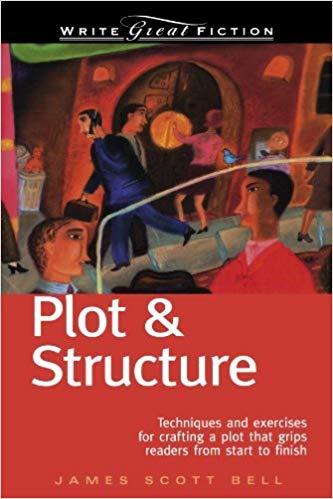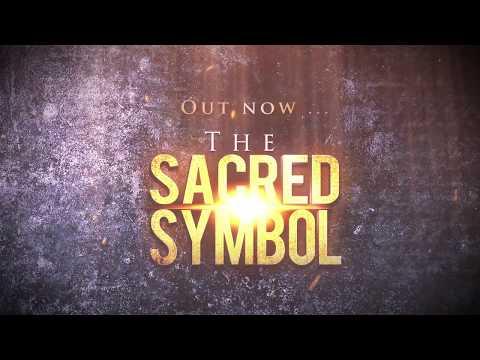Pinned 7 years 1 month ago onto Writing Guides

I love my job! I review craft of fiction books within the writing reference guides feature. I was sent some books for novelists to learn how to write good fiction by Writer's Digest Books and reviewed three essential topics for aspiring novelists:
- Description and Setting by Ron Rozelle
- Plot and Structure by James Scott Bell
- Dialogue by Gloria Kempton
- Check my Writing Book Gallery to find these other book reviews
James Scott Bell’s Plot and Structure helps aspiring novelist like you and me with techniques for crafting a plot that grips readers from start to finish. How does plot influence story structure? What’s the difference between plotting for commercial and literary fiction? How do you revise a plot or structure that’s gone off course?
James Scott Bell gives you techniques for crafting strong beginnings, middles and ends with easy to understand plotting diagrams and charts. He explains how to brainstorm to be sure you write original plot ideas and able to fix plot problems as and when they arise in your novel.
Using Plot Points In Your Novel
Where other writing reference guide authors use the term incidents or plot points, such as incident as the first plot point that turns your story and points your fictional character on another route, James talks about doorways. Your character must go through certain ‘doorways’ to get from the beginning of the story to the middle and then another ‘doorway’ to get to the end of the story.
He also draws us in further to plotting our novel or thriller ideas by finding ways for our readers to bond with our fictional characters, such as empathy, sympathy, hardship and jeopardy.
James then goes into great detail about plotting for your story beginning, the middle and the end and re-iterates what so many writing experts advise – stretch out the tension and raise the stakes for your character to be in peril. Your story is boring and not readable if lots of bad things are not happening to your fictional people. You have to throw stones at them as my writing mentor once told me.
"A good plot is about disturbance to a character’s inner and outer lives."
James also reminds us to say over and over to ourselves – who cares? Is there enough going on for the reader to care about what happens? What does the lead character stand to lose if he doesn’t solve the central problem of the story. More importantly, is that enough. Remember – who cares?!
Write Powerful Evocative Scene
Scenes are what we use to illustrate and dramatise those disturbances. Scenes are the essential building blocks of plot. On scenes James says that if we as novelists can make each of our scenes truly unforgettable, we will have written an unforgettable novel.
According to James, an emotional scene has something fresh and surprising and emotionally intense. It has characters we care about doing things that we must watch or read about. You create unforgettable scenes by refreshing what is forgettable, making the scenes come alive with tension and originality.
He goes on to explain that most often, the best way to create this unforgettable scene is to intensify the c. Two characters opposite each other. They have the strongest possible reasons to do so.
The four areas of a scene as far as James is concerned is action and reaction and set-up and deepening. I won’t give away all his secrets as he goes into greater detail about each of these in turn.
Hook Readers Into Your Scenes
I also like the way James brings some HIP into scenes with Hook, Intensity and Prompt (HIP)
Hook: grab the reader’s attention from the word go and pull them into the narrative/story.
Intensity: pack your scenes with tension primarily through conflict and as your story builds increase the intensity of that tension and conflict. If it isn’t strong enough, ratchet it up. If there is no tension and conflict, delete the scene. Every scene will vary in emotional intensity and shift around with the tension. Where you want the reader to feel the greatest emotion must stand out as the most vivid part of the narrative along with the right time.
Prompt: end scenes with a prompt to make readers turn the page. There are many great read-on-prompts, such as a secret suddenly revealed, a mysterious line of dialogue, a big decision, a question left hanging and one of the best ones to use is impending danger. Dean Koontz does this so well – all you need to do is read one of this books to find a master at making you turn his pages with impending danger.
James finishes his Plot And Structure with a list of tried and tested plot themes, such as ‘The Quest’ and he explains each one in turn, for example: rudiments of the quest and structure of the quest.
There are lots more plot patterns so be sure to pop over to Amazon now to read this great book by a master at the craft of teaching novelists how to write great fiction and you’ll learn so much about plotting your novel with structure.
Who knows, maybe you and I will write great novels one day soon!
Paula Wynne is the founder of Book Hub. She started Book Hub out of a need to market and promote her own fiction. As well as running Book Hub, Paula is an author with several published books.
Paula's Writers' Resource Series features the following books: Pimp My Fiction: How to Write a Novel with The Ultimate List of Creative Writing Books to Create A Plot & Build Character; A~Z Writers’ Character Quirks: A~ Z of Behaviours, Foibles, Habits, Mannerisms & Quirks for Writers’ to Create Fictional and 101 Writers’ Scene Settings: Unique Location Ideas & Sensory Details for Writers’ to Create Vivid Scene.
Find out more about the Writers' Resource Series here. If you would like to find out how to write a bestselling novel, download a free copy of Paula's Pimp My Fiction.
Follow Paula on Amazon's Author Central to find out when she publishes more books. Or you can follow Paula on Twitter and Facebook.

























